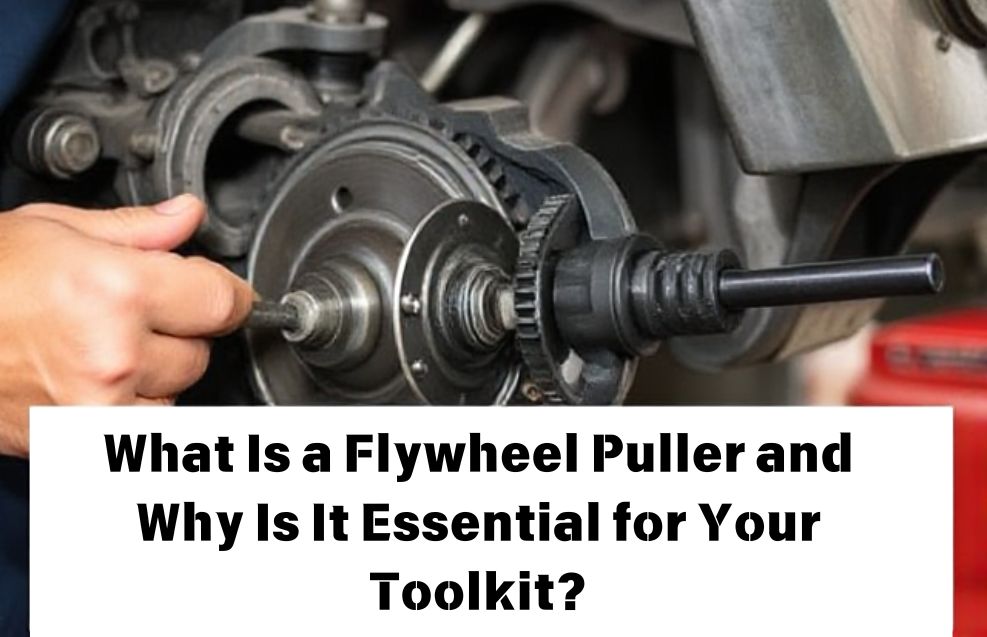When tackling mechanical projects, one indispensable tool is the flywheel puller. Whether you’re a seasoned mechanic or a DIY enthusiast, understanding how to use this tool can save time and prevent damage to your machinery. In this blog, we’ll explore everything you need to know about the flywheel puller, its uses, and why it deserves a place in your toolkit.
What Is a Flywheel Puller?
A flywheel puller is a specialized tool designed to remove the flywheel from an engine or motor without causing damage to the surrounding components. The flywheel is a crucial part of an engine, storing rotational energy and ensuring smooth operation. Over time, the flywheel may need to be removed for repairs, maintenance, or replacement, and that’s where the flywheel puller comes into play.
Using a flywheel puller ensures that the removal process is efficient and damage-free. Without this tool, you might resort to using makeshift methods that could harm the engine or the flywheel itself.
Types of Flywheel Pullers
Flywheel pullers come in various types to accommodate different engine designs and sizes. Here are some common types:
- Two-Jaw Puller
- This type uses two arms to grip the flywheel’s edge, applying even pressure during removal. It’s ideal for smaller engines or motorcycles.
- Three-Jaw Puller
- Similar to the two-jaw puller but offers more stability with three arms. It’s commonly used for larger flywheels.
- Threaded Flywheel Puller
- Designed specifically for engines with threaded flywheels, this type screws into the flywheel for a secure fit.
- Universal Flywheel Puller
- As the name suggests, this versatile tool works with a variety of flywheel sizes and types, making it a popular choice for mechanics handling diverse equipment.
How to Use a Flywheel Puller
Using a flywheel puller requires careful attention to ensure safety and effectiveness. Here’s a step-by-step guide:
- Prepare the Area
- Ensure the engine is turned off and disconnected from any power source. Clean the area around the flywheel to remove debris.
- Select the Right Puller
- Choose a flywheel puller that matches the size and type of your flywheel.
- Secure the Puller
- Attach the puller to the flywheel according to the manufacturer’s instructions. Ensure it’s tightly secured to prevent slipping.
- Apply Pressure
- Gradually tighten the puller to apply even pressure. Avoid sudden force, as this could damage the flywheel or engine.
- Remove the Flywheel
- Once the flywheel is loosened, carefully remove it from the engine. Inspect it for any signs of wear or damage.
- Store the Puller Safely
- After use, clean and store your puller to maintain its condition.
Read Also : What is a Guardrail and Why is It Crucial for Safety?
Why Is a Flywheel Puller Important?
Prevents Damage
Using the correct puller minimizes the risk of damaging the flywheel, engine components, or crankshaft. Makeshift methods can lead to costly repairs.
Saves Time
A flywheel puller streamlines the removal process, saving time compared to alternative methods.
Versatility
Many such pullers are designed to work with various engines, making them a versatile addition to your toolkit.
Cost-Effective
Investing in a quality flywheel puller can save money in the long run by reducing the need for professional repairs.
Common Applications of Flywheel Pullers
These pullers are used in various industries and applications, including:
- Automotive Repair Removing flywheels from cars and motorcycles for maintenance or repair.
- Small Engine Maintenance Working on lawnmowers, chainsaws, and other small engines.
- Marine Engines Servicing boat engines and other marine equipment.
- Industrial Equipment Maintaining machinery used in factories and workshops.
Tips for Choosing the Right Flywheel Puller
When selecting a puller, consider the following factors:
- Compatibility
- Ensure the puller is compatible with the flywheel size and type you’ll be working on.
- Build Quality
- Opt for a durable, high-quality tool made from sturdy materials like steel.
- Ease of Use
- Look for a design that’s user-friendly and easy to handle.
- Price
- While affordability is important, prioritize quality to ensure long-term reliability.
- Brand Reputation
- Choose a reputable brand known for producing reliable tools.
Maintenance and Care for Your Flywheel Puller
To extend the lifespan of your puller, follow these maintenance tips:
- Clean After Use Wipe down the tool to remove grease, dirt, and debris.
- Store Properly Keep the puller in a dry, secure location to prevent rust or damage.
- Inspect Regularly Check for signs of wear or damage before each use.
- Lubricate Moving Parts Apply lubricant to keep the tool operating smoothly.
Common Mistakes to Avoid When Using a Flywheel Puller
- Using the Wrong Type
- Always match the puller to the specific flywheel to avoid damage.
- Applying Excessive Force
- Gradual, even pressure is key; avoid sudden or excessive force.
- Skipping Maintenance
- Regular care ensures the tool remains effective and safe to use.
- Ignoring Safety Precautions
- Always wear protective gear and follow instructions to prevent accidents.
Conclusion
A flywheel puller is an essential tool for anyone working with engines or machinery. Its ability to remove flywheels safely and efficiently makes it invaluable in automotive, marine, and industrial applications. By investing in a high-quality puller and using it correctly, you’ll save time, prevent damage, and enhance your mechanical capabilities.
Whether you’re a professional mechanic or a DIY enthusiast, a flywheel puller is a must-have for your toolkit. With proper care and maintenance, this tool will serve you well for years to come. So, the next time you encounter a stubborn flywheel, you’ll know exactly what to do—reach for your trusty flywheel puller and get the job done right.

